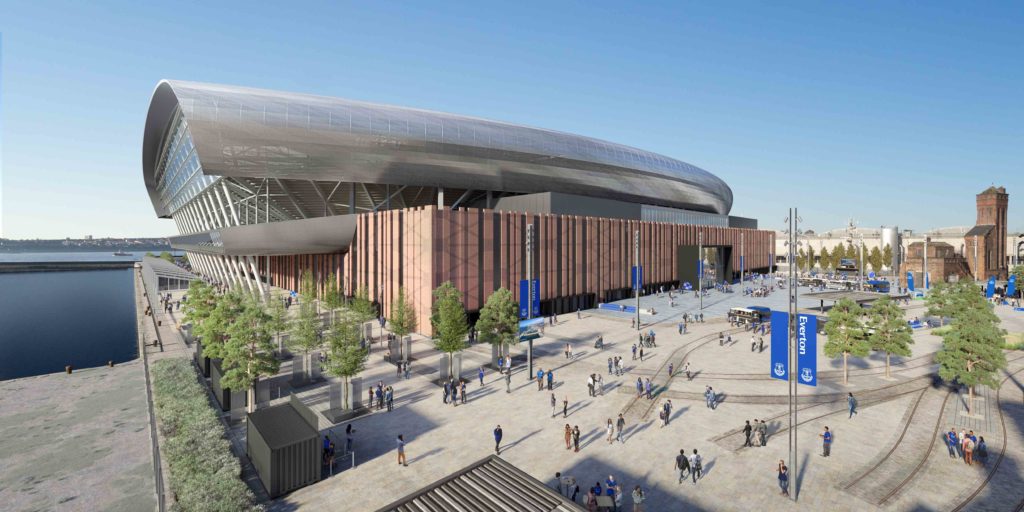
An investment package of up to 45m to support the delivery of Everton’s new stadium at Bramley-Moore Dock and the Goodison Legacy Project has been approved by the Liverpool Combined Authority.
Council Leaders from across the Liverpool City Region today (Friday) voted in favour of a grant of up to £15m to assist with infrastructure work to public space and heritage sites on and around Bramley-Moore Dock – as well as giving the greenlight to a loan of up to £30m towards the overall project to build a new 52,888-seat waterfront stadium.
The investment will support the “transformational regeneration” the Club’s widespread project will deliver for large parts of north Liverpool and south Sefton.
Everton CEO, Professor Denise Barrett-Baxendale, said: “From the very inception of our new stadium plans – and the 11 key principles that underpin it – we have been focused on not only delivering a world-class new home for our Club, but also a truly transformative regeneration project for the north of Liverpool and the wider city region.
“We have worked closely with the Metro Mayor and local civic leaders throughout the project towards that objective.
“The approval today by the Liverpool City Region Combined Authority for a grant of up to £15m and a loan of up to £30m, to help us facilitate our vision, is a testament to the impact our stadium project and the redevelopment of Goodison Park will have for communities across our region.
“Our new home will be a world-class sporting arena. A home fit for Everton Football Club! And it will bring with it economic regeneration, job creation, new visitors to our city and a wealth of opportunities for thousands of local people, breathing new life into the north of Liverpool and acting as a catalyst to accelerate other redevelopment projects in the area.
“The Combined Authority has demonstrated its appreciation of that vision and the importance of our project in the renaissance of north Liverpool. The authority’s support and investment in helping make that a reality is greatly appreciated.”
The stadium project will offer a boost of £1.3bn to the local economy, attract an extra 1.4m visitors to the region each year and deliver an additional £237m of social value.
The Combined Authority’s funding comes with conditions, which include a commitment from the Club to targets for employment and training opportunities for local residents.
In a joint statement, Liverpool City Region Metro Mayor Steve Rotheram, Cllr Mike Wharton, Leader, Halton Borough Council, Cllr Louise Harbour, Deputy Leader, Knowsley Borough Council, Joanne Anderson, Mayor of Liverpool, Cllr Ian Maher, Leader, Sefton Borough Council, Cllr David Baines, Leader, St. Helens Borough Council and Cllr Janette Williamson, Leader, Wirral Borough Council said: “The Combined Authority exists to drive economic regeneration, create jobs and opportunities for local people, and breathe new life into an area that has continually been left behind by national governments.
“Devolution is all about local leaders taking control of our own destiny and working with local people to shape the future we want for our region.
“This project stands as one of the most significant regeneration projects our region has seen in more than a decade and will be a major catalyst for regeneration and revival in an area that has been crying out for investment for decades.
“This is not an investment in a football club but in an important project that will generate a myriad of social and economic benefits for communities across our region. From creating thousands of jobs, training and apprenticeship opportunities for local people, attracting hundreds of thousands of new visitors to our region and launching programmes that will help to tackle health and social inequalities, whilst supporting the vulnerable within our communities.
“The financial returns generated from this investment will ensure that we are able to invest in further regeneration projects and services across the city region. Given austerity and the financial constraints that local councils continued to face, this is an innovative way of generating new money and investing to improve our region.”








Leave a Reply